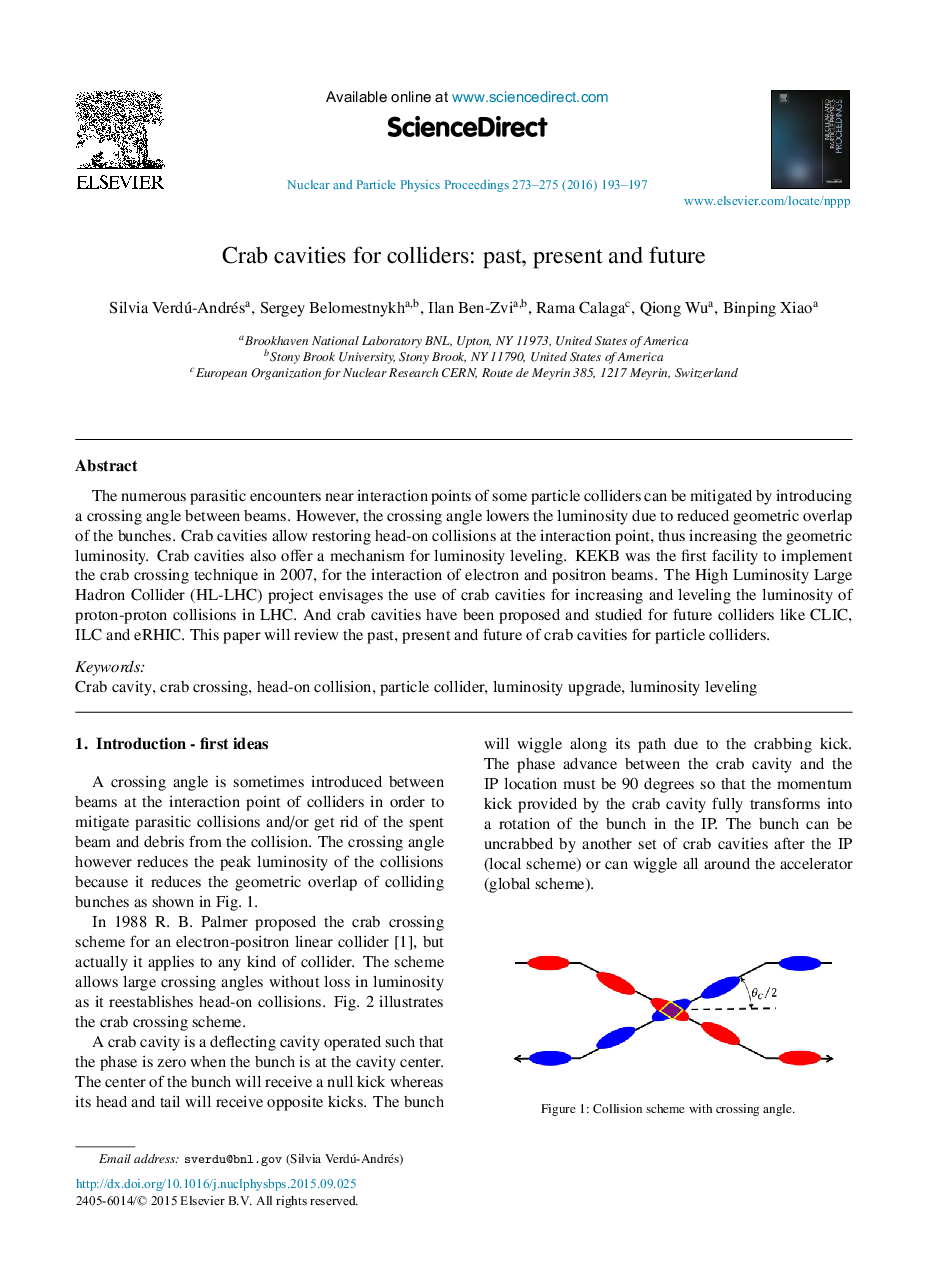| Article ID | Journal | Published Year | Pages | File Type |
|---|---|---|---|---|
| 1835341 | Nuclear and Particle Physics Proceedings | 2016 | 5 Pages |
The numerous parasitic encounters near interaction points of some particle colliders can be mitigated by introducing a crossing angle between beams. However, the crossing angle lowers the luminosity due to reduced geometric overlap of the bunches. Crab cavities allow restoring head-on collisions at the interaction point, thus increasing the geometric luminosity. Crab cavities also offer a mechanism for luminosity leveling. KEKB was the first facility to implement the crab crossing technique in 2007, for the interaction of electron and positron beams. The High Luminosity Large Hadron Collider (HL-LHC) project envisages the use of crab cavities for increasing and leveling the luminosity of proton-proton collisions in LHC. And crab cavities have been proposed and studied for future colliders like CLIC, ILC and eRHIC. This paper will review the past, present and future of crab cavities for particle colliders.
